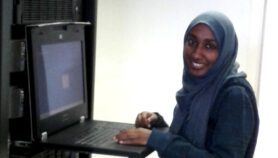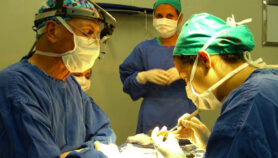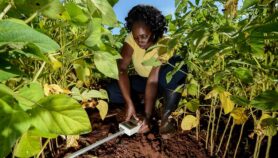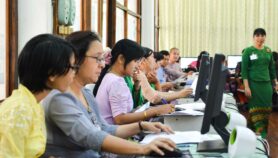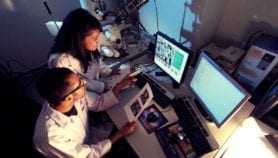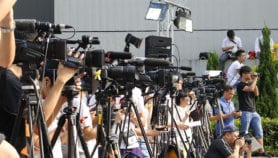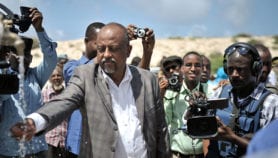By: Nicky Lewis
Send to a friend
The details you provide on this page will not be used to send unsolicited email, and will not be sold to a 3rd party. See privacy policy.
 |
The early days
When he was just 15 years old, Muhammad Ibrahim and his friends started to produce a monthly magazine, in Bengali, on science for young people. “I was quite the entrepreneur,” Ibrahim says, laughing.
Before long, the magazine was a commercial venture, with a paying audience that extended to professional scientists, who “had no idea that it was the creation of high school students”.
But gradually Ibrahim’s interests turned away from professional science and towards the interaction between science and the wider society.
The magazine started to feature articles on topics such as appropriate technology and so-called ‘traditional science’ that was in danger of being lost. “We wanted to look at the significance of science for rural people”, he says.
Ibrahim continued to edit the magazine from England while studying for his PhD in solid-state physics at Southampton University. On returning to Bangladesh, however, he became dissatisfied with the scope of the publication.
“I realised that just writing about science was not enough. We were only addressing the middle classes who could read and were already interested in science. We were not reaching the rest of the population”, he explains.
And so, in 1978, the Centre for Mass Education in Science was born.
Nearly a quarter of a century later, CMES has schools all over Bangladesh catering to some 25,000 students, and employs about 1,500 staff.
Setting up the first schools
Initially run from Ibrahim’s house in Dhaka, CMES continued in its early days to concentrate on popularising science through publications. “It was the only thing we knew at that stage”, he admits. It started a features service, published a series of books for UNICEF and did some work for Bangladesh Television.
But its attention soon turned to education. Reacting against the narrow definition of education within the state system, Ibrahim wanted to explore an alternative, more holistic approach to teaching. “We didn’t really know what we were going to do — just that it would be very different from our existing education system”.
 Island village outside Dhaka |
In 1981, CMES’s first school was built in a village just outside Dhaka. It focused on reaching out to adolescents who had dropped out of school, or never been in the first place.
Welcomed by the first group of students — who were taught skills that addressed “real-life issues” — the CMES school was not without its critics. “Education people thought school should look like a school, not a farm or workshop or marketplace”, says Ibrahim.
But CMES insisted that in order to be life-oriented, its rural technology centres (RTCs) — as they came to be known — had to be all these things and more.
In fact, CMES embodies the principle that the world of education and work must be interwoven. “The sole purpose of CMES is the linkage between education, skills and livelihoods”, says Ibrahim.
Despite being located in rural villages, it soon became obvious that the RTCs were still too difficult to reach for many of the target students. As a result, a network of ‘basic schools’ — staffed by just one teacher, and often run from a local house — was built up around each RTC.
In this way, CMES was able to permeate even the remotest parts of the country.
Innovative ideas
 Learning to use technology |
CMES ensures that every student receives a basic education underpinned by literacy and numeracy.
But in keeping with its mandate to relate education to livelihoods — and the idea that students should be encouraged to use their initiative — CMES has also devised a syllabus rooted in enterprise and business. “We made it a principle to only teach a technology if it was commercially viable”, says Ibrahim.
Sometimes this meant sticking to “humdrum technologies”, such as dyeing fabric and pottery because “they’re the ones that produce customers”, he says. But occasionally they have managed to introduce new ideas.
Mushroom cultivation, for example, may not sound particularly revolutionary. In Bangladesh the main demand is from Chinese restaurants in the cities. But CMES discovered that mushrooms are popular in rural areas too. It now helps students set up mushroom-farming enterprises to supply this untapped rural market.
More recently CMES has developed some solar electricity projects using photovoltaic panels. “We set up what we call micro-utilities — very small companies to electrify the village bazaar and that kind of thing”, says Ibrahim. A number of students have become fully trained ‘solar electricians’.
A continuing programme of research and development ensures that projects are tailored to students’ needs, and also teaches them the fundamentals of scientific methodology. “We have technical labs where we test the adaptation of technologies and their successful commercialisation”, says Ibrahim.
Targeting adolescent girls
Over the years, it became clear that although CMES made efforts to be “girl-friendly”, it was failing to attract and retain female students.
Ibrahim blames this on the discriminatory attitudes prevalent in Bangladeshi society. Many parents consider it pointless to educate their daughters. They may think “she’ll end up in the kitchen so what will she do with education?” or “she’ll go to another family anyway” or “too much education and she’ll dare to be disobedient”.
An additional barrier arises with science and technology teaching — “they think it’s not for them”.
 Measuring blood pressure |
In 1991, in a pioneering move, CMES launched a separate adolescent girls programme (AGP). “At that point there were other women’s organisations and NGOs doing women’s rights issues, but nobody else focused specifically on adolescent education”, says Ibrahim.
The programme enables girls to participate in non-conventional activities that involve some kind of technology. “We didn’t want them just to keep goats and chickens. So we started with photography and moved on to pharmacies, laundries and even beauty parlours!” remarks Ibrahim.
Girls are also encouraged to try typically ‘male’ activities such as carpentry, metalwork and machine repairs.
In pursuing the idea that women should be able to take on business roles traditionally restricted to men, the AGP has faced considerable social obstacles. For example, CMES was forced to organise a credit scheme for female students, who were unable to secure loans unless they were married.
This unconventional approach appears to be paying off.
“Our first set of photographers are now professionals with their own studios. Recently, two of them were invited to Islamabad to meet the Pakistani President Musharraf’s wife. One is the daughter of a rickshaw puller,” Ibrahim says with pride.
The future of CMES
There is no doubt that CMES is something of a success story. But rather than boast of his achievements, Ibrahim is more concerned about its limitations. “We are only serving 30,000 people. A major issue for the future is how to replicate this,” he says.
One of his ideas is to work in partnership with local enterprises. “We can provide them with educated labour, and in exchange they allow the students to work in their factories or shops and learn a trade”.
Ibrahim stresses how crucial it is that students continue their education — even if only part-time — after leaving school. “We want them to become educated technicians, not just labourers, so it’s important that they continue to come back to school from time to time”.
And, of course, as an organisation that relies on donor money, there’s always the issue of future funding. “It keeps us on our toes!” Ibrahim jokes.
He also recognises that CMES must face up to the information and communication technology (ICT) boom that is just beginning to hit Bangladesh. Within the last year CMES kitted out half of its rural units with mobile (cellular) phones, which are used to provide daily text message reports on attendance and production.
And although there is currently no specific plan to incorporate ICT into CMES’s teaching programme, Ibrahim agrees that it must be “ingrained into the psyche of Bangladeshi culture”. He explains that, “ICT should not come as an afterthought to education. Like any other literacy it has to be from the beginning”.
Based on its history so far, CMES should have no problem responding to this new challenge, and looks set to evolve well into the future.
© SciDev.Net 2002
Photo credits: CMES (‘class’, ‘technology’, ‘blood pressure’); Nicky Lewis/SciDev.Net (‘island village’)


